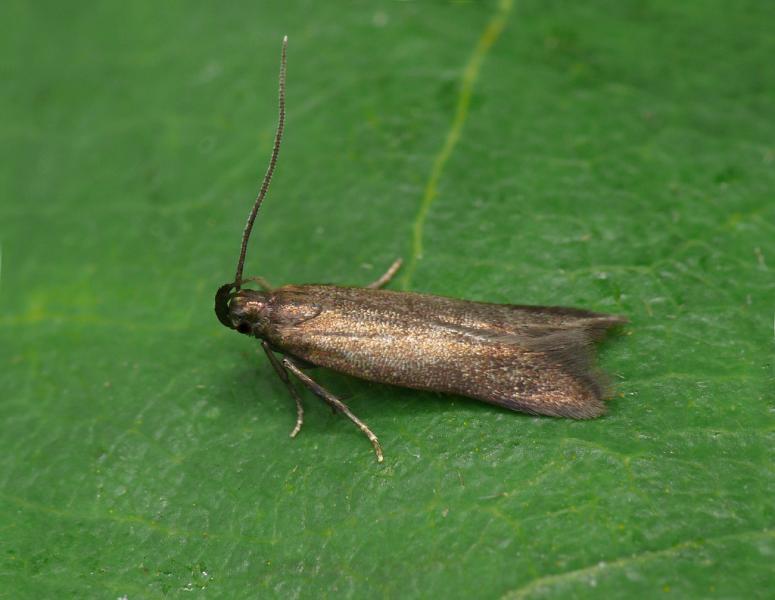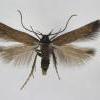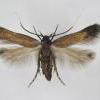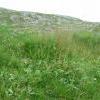35.066 Monochroa tenebrella (Hübner, 1817)
Status and Distribution
Local over all of the British Isles and the Channel Islands; can occasionally be locally common.

Provisional map
Pupa
Set Specimens
Foodplant and Larval Feeding Signs
Rumex acetosella (sheep’s sorrel), see plant distribution map, and Rumex acetosa (common sorrel) (South Devon in 2013 - R. J. Heckord and S. Beavan pers. comm.).
There are no external signs of feeding damage.
Habitat
Finding the Moth
Larva: feeds in the rootstock from September onwards and pupates in the larval feeding place in May.
Adult: can be readily swept from amongst the foodplant where it flies in sunshine and occasionally comes to light.
Similar Species
Oxypteryx unicolorella females have wholly dark antennae as opposed to the white apical third of female M. tenebrella - male antennae are the same colour. The third segment of the labial palpus is shorter than segment two in M. tenebrella and of equal length in O. unicolorella. Examination of these feature can be tricky in live moths, particularly in poor or artificial light.
Where moths are attracted to light (i.e. potentially away from an obvious habitat or foodplant association) and it has not been possible to examine the palps or antennae carefully in good light (or if the moth has dark antennae) retention of a voucher specimen and, if necessary, dissection is recommended for any new sites for either species.
Single brooded in June and July.
Earliest : 26th May 1990 (VC15)
Latest: 14th August 2001 (VC9)






